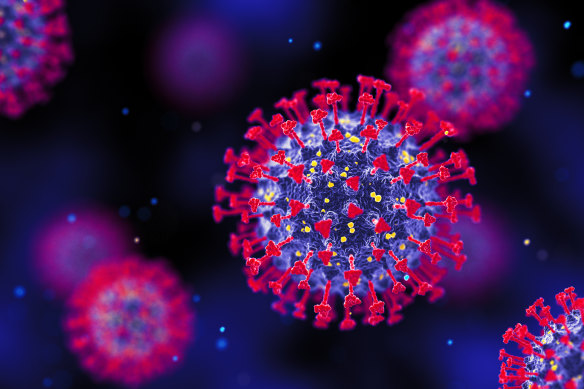Infection
What you need to know about Eris, the latest COVID variant
The new coronavirus variant nicknamed Eris is unlikely to cause a new wave of infection in Australia, experts say.
Eris – a variant of Omicron, real name EG.5.1 – is now the most prevalent variant in the US, and is spreading in Europe and Asia. Since it was first spotted in Australia in April, some 68 cases have been detected.
But Australia’s COVID infections continue to be dominated by what scientists term a “variant soup” of multiple different variants competing to infect us.
Evidence so far suggests EG.5.1 may be slightly more infectious than Omicron but that advantage is so slight it is unlikely to cause a new wave, said associate professor James Wood, an infectious diseases modeller at the University of NSW.
“We’ve had EG.5.1 samples detected here for a couple of months and it hasn’t exactly established itself in that timeframe, so while it might end up being a substantial fraction of infections eventually, it isn’t a wave threat,” he said. “It’s not a big issue.
“My qualitative view here is that we may still need to see one or two additional spike mutations on top of these changes before these start to move the needle on wave risk.”
A 3D render of SARS-CoV-2, the virus that causes COVID-19.Credit: iStock
Australia reported 5431 COVID-19 cases last week, though that number is likely a considerable underestimate due to the closure of testing facilities and the rolling back of mandatory reporting for positive rapid test results.
There are 1088 people in hospital with the virus and 32 in intensive care around the country, according to data from COVID Live. Sixty-three deaths were reported last week.
Associate professor Stuart Turville’s variant-chasing team at the Kirby Institute isolated and grew EG.5.1 in May. The variant has picked up a mutation that slightly changes its shape, Turville said.
“This is a bit of a sweet spot for antibodies to bind to the virus and block it. It makes it a little bit better avoiding antibodies from a vaccine or past infection,” he said.
In late 2022, variants of Omicron started rapidly accumulating mutations that made them dramatically more infectious. At that time, multiple different viruses were active in Australia, each with significantly different profiles, Turville said.
The changes being seen now are much smaller and only give the virus a slight infectious advantage. Many of the circulating variants are now starting to look extremely similar.
“It has already done the hard work,” Turville said. Turville and Wood both cautioned against reading too much into the variant obtaining a nickname.
“Kraken”, real-name XBB.1.5, came and went earlier this year without significant public health effects.
Get the day’s breaking news, entertainment ideas and a long read to enjoy. Sign up to receive our Evening Edition newsletter here.

